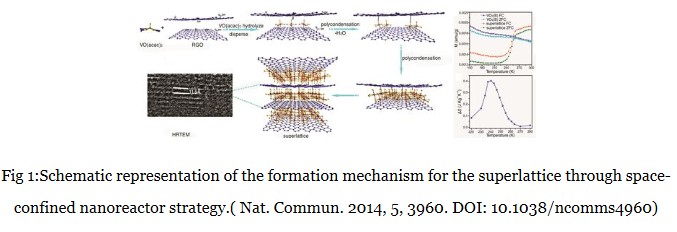Taking Spatially Confined Reaction to Superlattice Synthesis
XIE Yi, professor of materials science and engineering, and her team have developed a new strategy to synthesize superlattice, which is based on spatially confined reaction. This work has been published in Nature Communications on June 3, named “Magnetocaloric effects in a freestanding and flexible graphene-based superlattice synthesized with a spatially confined reaction”.
Superlattice has fascinating properties which open new opportunities to design new materials. However, the main drawback of superlattice lies in its synthesis and traditional methods, like pulsed laser deposition or molecular beam epitaxy, which require complex and expensive process from the growth substrate for final application. Based on recent progress in graphene, XIE Yi and her collaborators introduce spatially confined reaction to superlattice synthesis.

They find 2-D graphene layers can not only provide confined reacting space, but also act as electron donor to reduce formation energy in their reacting system. To prove their hypothesis, XIE’s group experimentally obtains the perfect freestanding and flexible vanadium oxide/graphene superlattice nanosheets via this method. Moreover, they observe enhanced magnetocaloric effect and smart switching behavior in electrical conductivity. It can be predicted that this new finding will be quite meaningful when applied to intelligent devices.
(CHEN Yaoyao, USTC News center)
(CHEN Yaoyao, USTC News center)
Back
